Based in
Australia
Photographed in
Indonesia
Sulphur – the necessary component in the production of batteries, fertilisers, vulcanizing rubber, cosmetics is found in massive deposits in the crater of Ijen volcano in east Java, Indonesia. Here traditional sulphur miners descend into the crater every day to harvest the valuable mineral. They do so with simple tools, taking minimal safety precautions against noxious fumes and steep rock faces. Miners break up the sulphur with metal pipes, haul the pieces out of the crater and carry them several miles to the weighing station. Typically, a miner will make several circuits in a day, carrying 50 to 60 kilos of loaded sulphur pieces on their shoulders.
The price paid to the miners is equivalent to 0.0 8 cents per kilo! When I heard the amount, I was in shock. Number of questions started raising through my head and one of them was what about the true cost of the “Devils gold”. What does it take and what is costing the miners working on this fields? I spoke with few miners, and it was clear that this archaic process of sulphur mining is extremely dangerous as the concentrated hydrogen sulphide and sulphur dioxide gases can burn a miner’s eyes and lungs and can even dissolve teeth. All the miners that I spoke with that day already reported problems with their lungs, knees and shoulders and their teeth were partially dissolved. The crater’s sides are also steep, jagged, and slippery and the volcano itself has the capacity to erupt unexpectedly. It was heart breaking when two of the miners took his top off to show me the scars on his shoulders. Irvan and Supeno shoulders were disfigured due to heavy loads that they are carrying daily for number of years.
Although mining is hazardous, most workers would rather brave the dangers of the volcano than lose a job. It’s one of the best paid jobs in Java, unfortunately the life expectancy of miners working there for long time is 50 years.
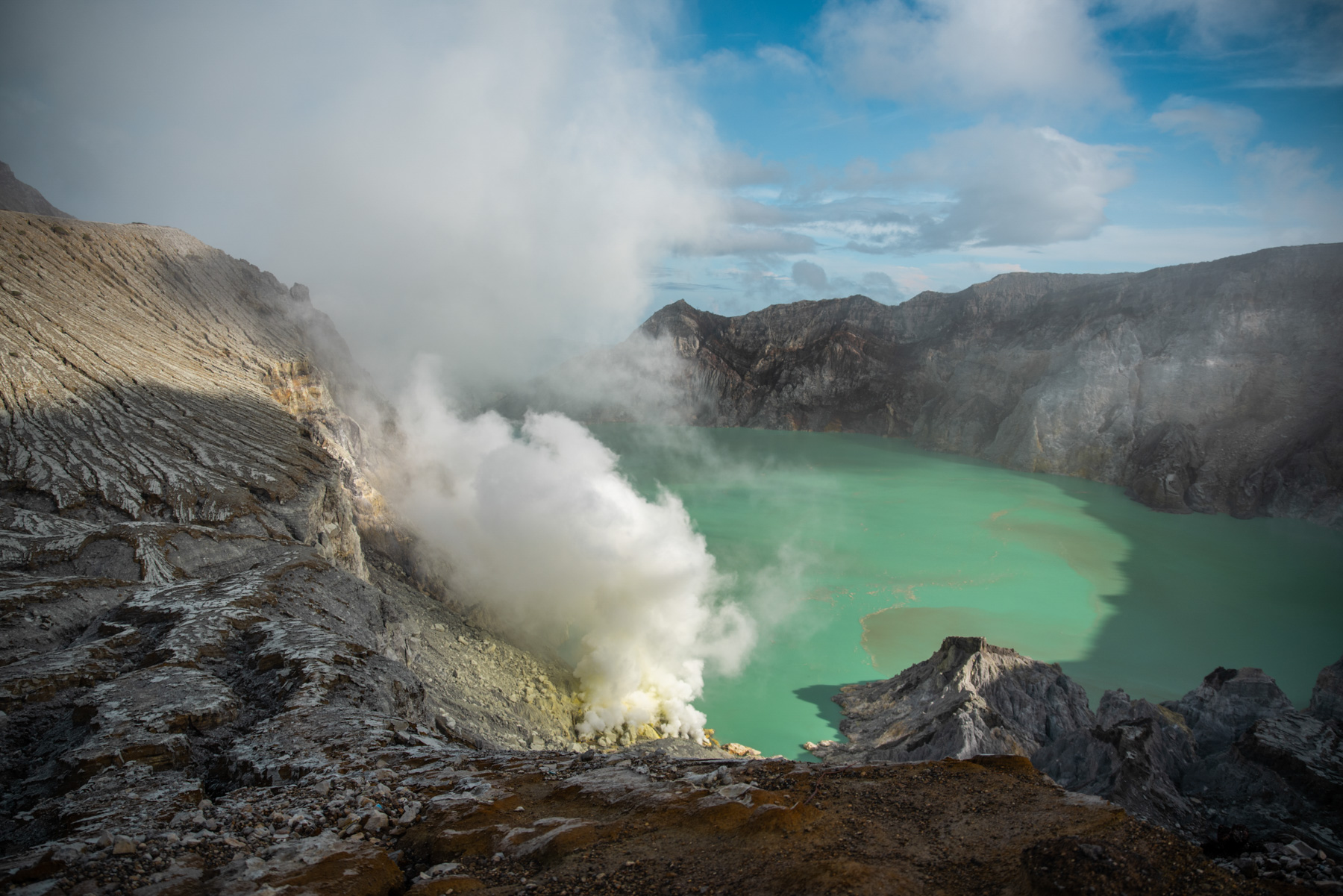
Sulphur mining in Indonesia occurs when miners tap the volcano’s supply of sulphurous gases with stone and ceramic pipes. Inside these pipes, sulfur cools to its molten state, then drips out along Ijen lake’s edge and solidifies into pure, minable sulphur.

Ijen volcano in East Java, Indonesia, is home to massive sulphur deposits and an acidic crater lake.Here traditional sulphur miners descend into the crater every day to harvest the valuable mineral.

This is Irvan, 45 years old sulphur miner. He has been working in the crater of Ijen volcano for more then 25 years.
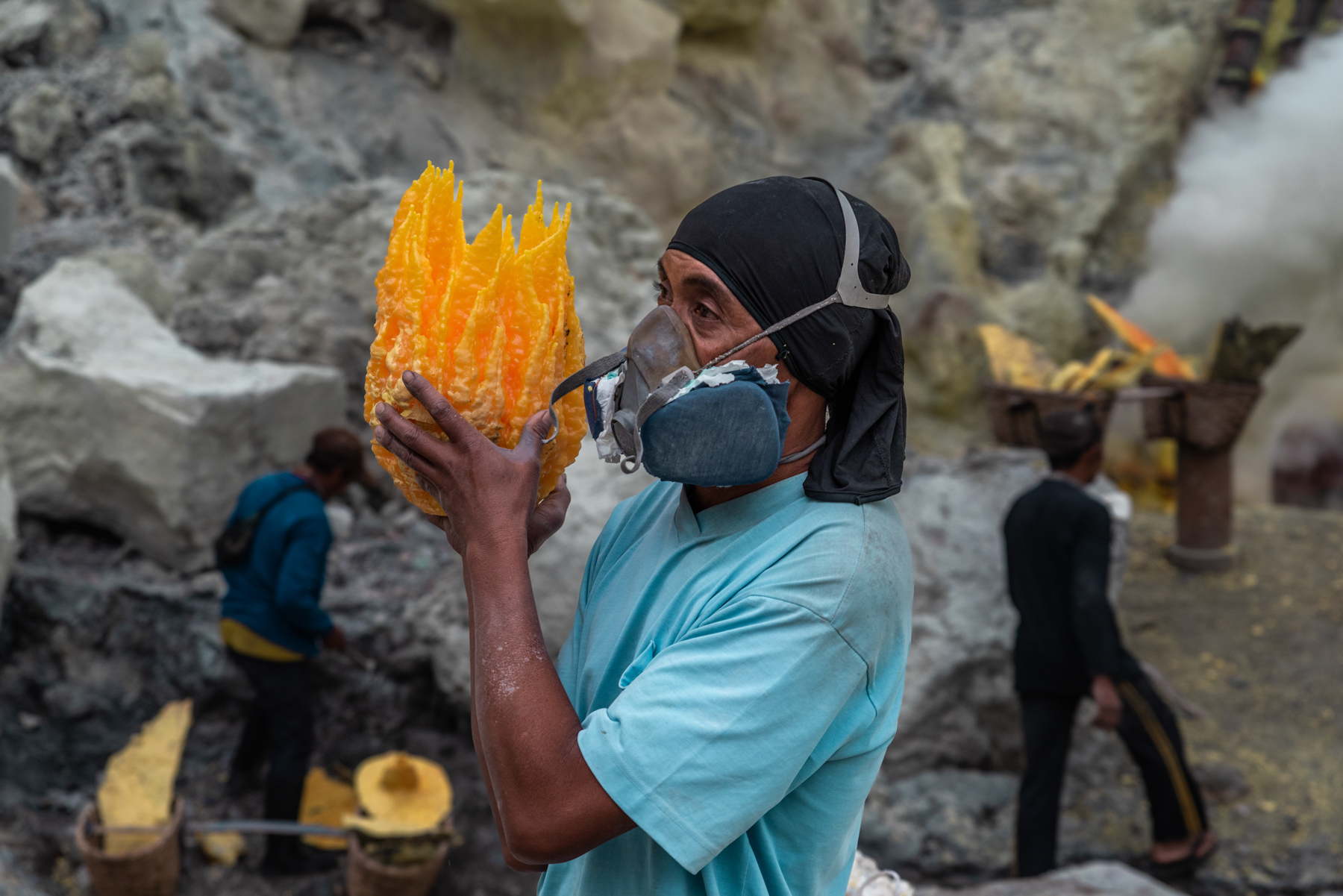
Irvan is holding pure solified piece of sulphur that he will later load in his basket and will sell it for 8 cents per kilo to the sulphur company.
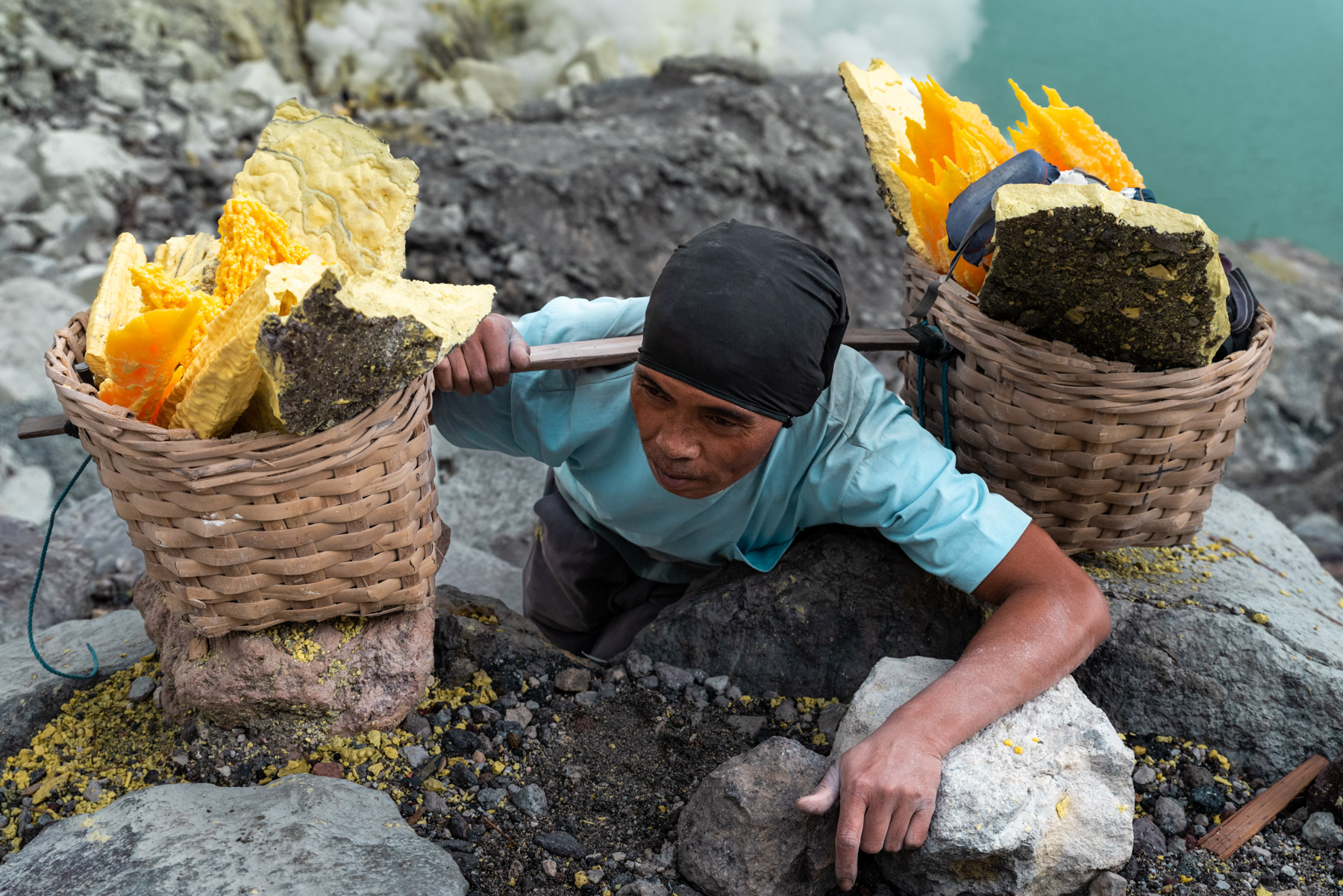
Irvan, 45 years old sulphur miner, carries a load of sulphur along a rocky track back up the inner walls of the Ijen crater. It will take him at least 2 hours to climb to the rim of the volcano. Later he will continue the journey for another few hours to get to the weighing station.
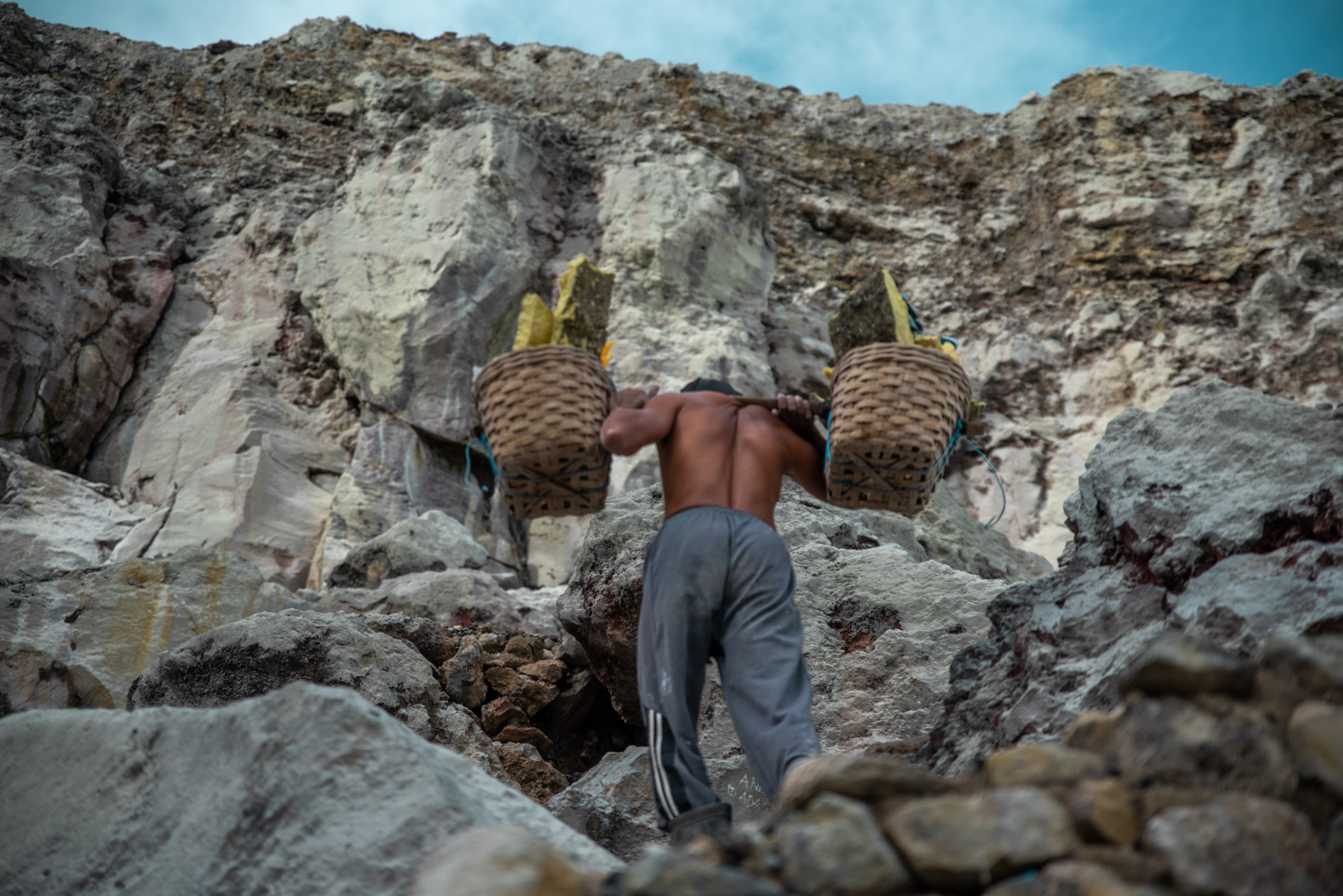
Ijen crater’s sides are steep, jagged and slippery. The volcano itself has the capacity to erupt unexpectedly. It is very dangerous journey , but when I asked Irvan why he is doing what he is doing his answer was ” I hope I can afford to educate my kids to have better future”.
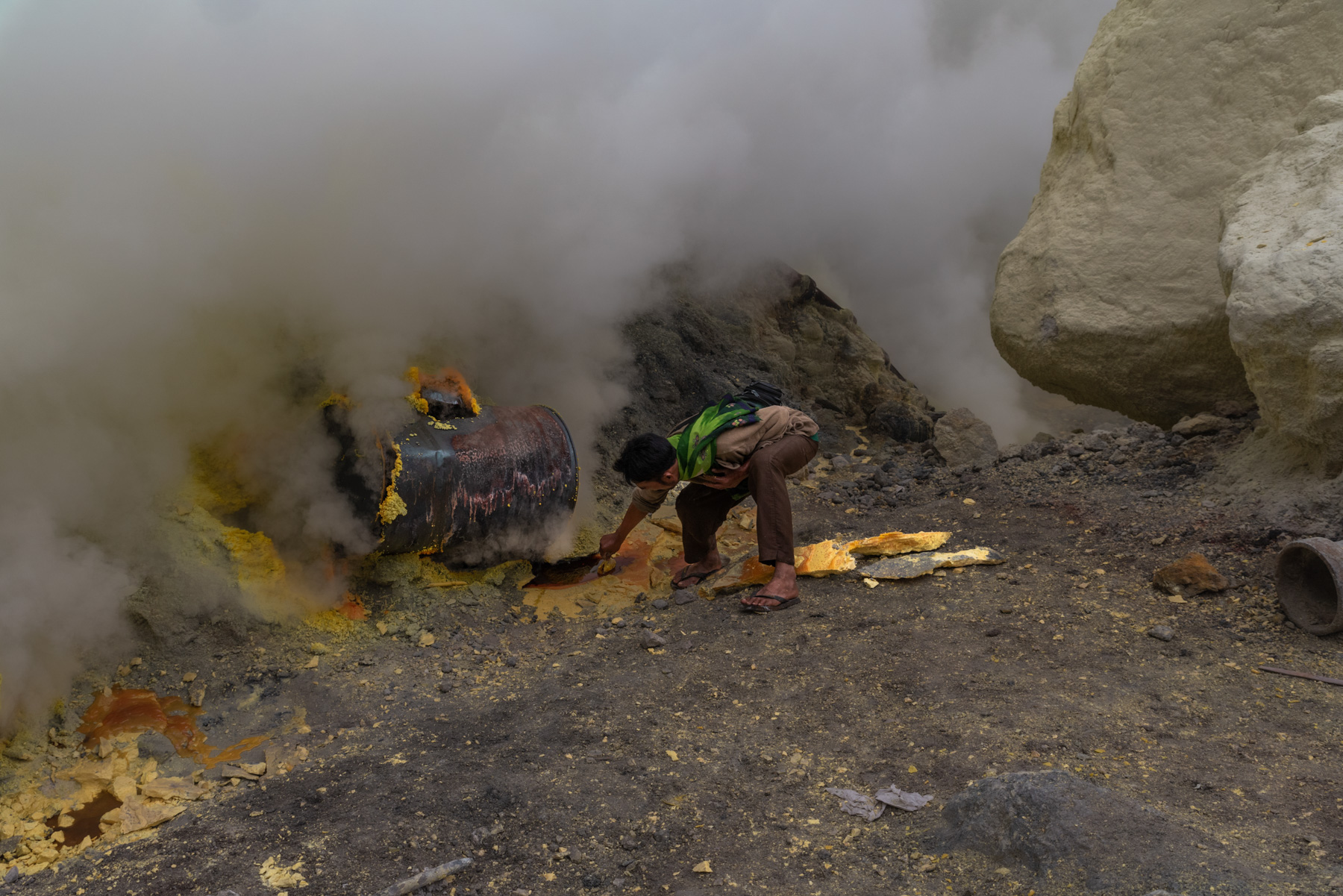
Supeno is 40 years old sulphur miner that has been working in Ijen in the last 20 years. He is taking small amount of the liquid sulphur to make small souvenier that he will try to sell it to tourists.
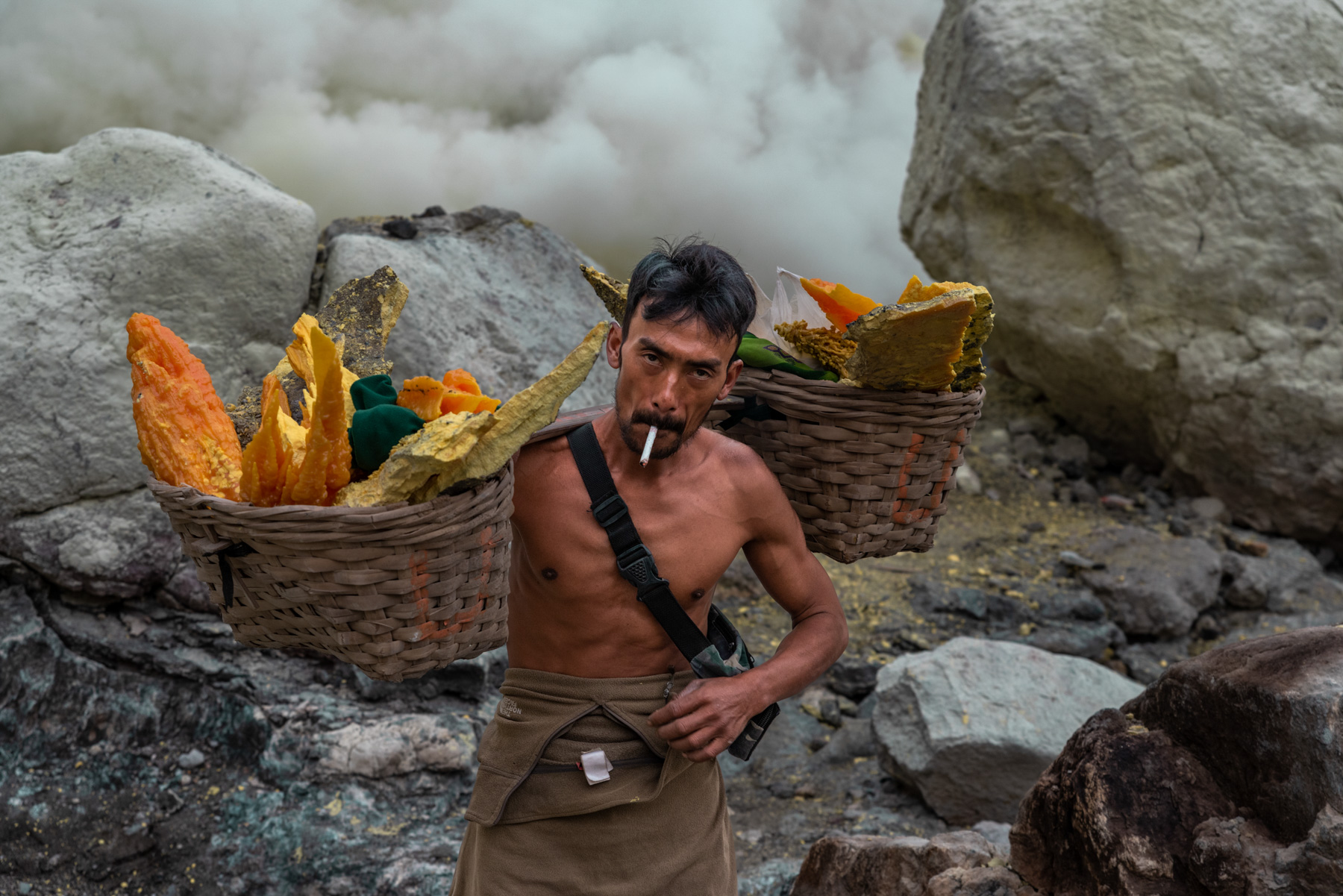
Most of the sulphur miners smoke while they are carrying the heavy loads of sulphur in the basket. As I was told by Supeno he estimated that he has around 60 kg of sulphur in the basket, so he will get paid around 4.8 euros .

Every step is dangerous and Supeno must balance each step of the way uphill.
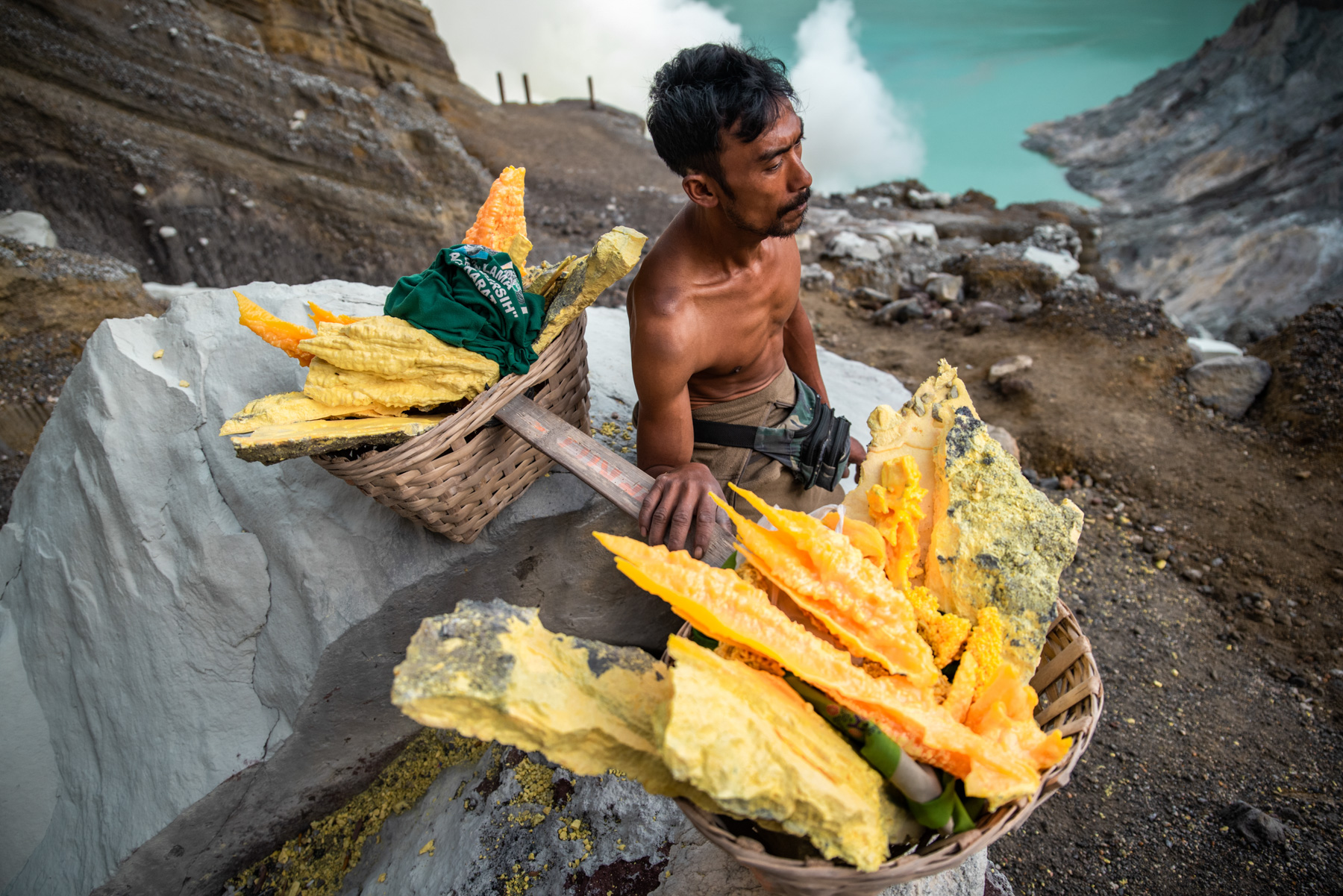
Supeno body has adapted to the harsh conditions. He has hyper-developed shoulder muscles or the ability to hold breath for an extended period of time. Despite any bodily adjustments, however, the life expectancy of those exposed to sulphur over long periods of time is not promising.
